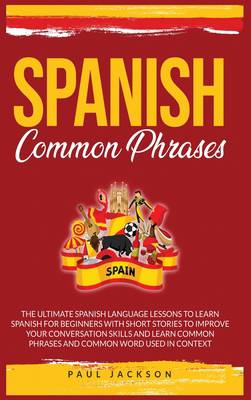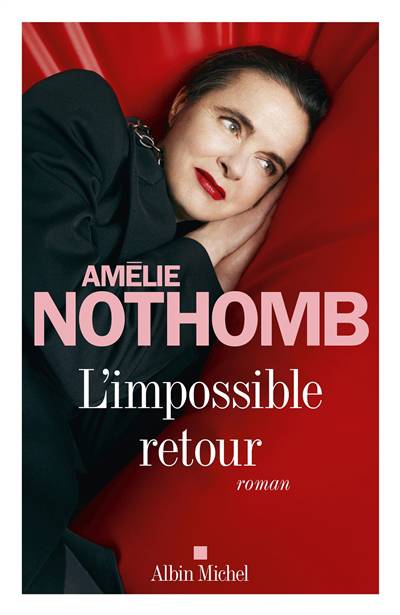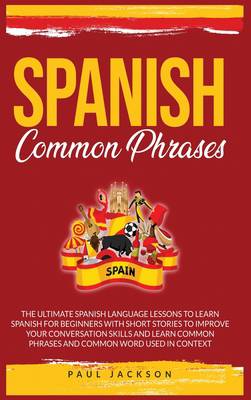
- Retrait gratuit dans votre magasin Club
- 7.000.000 titres dans notre catalogue
- Payer en toute sécurité
- Toujours un magasin près de chez vous
- Retrait gratuit dans votre magasin Club
- 7.000.000 titres dans notre catalogue
- Payer en toute sécurité
- Toujours un magasin près de chez vous
Spanish Common Phrases
The Ultimate Spanish Language Lessons to Learn a Language for Beginners with Phrases to Improve Your Conversation Skills and Learn Common Word Used in Context
Paul JacksonDescription
I'm assuming by the nature of this book that it may be your first foray into language learning. As such, I felt that it was appropriate for me to take some time to explain some things about language learning in general, as well as the Spanish language in particular. Don't worry, this won't take a long time, all it is a collection of observations and that I've made about language learning and Spanish itself.
The first thing that I always hear from people trying to learn a new language is that it's overwhelmingly difficult, or that they're simply not cut out for it for this reason or that. That's essentially a total lie. Our brains are hardwired for language.
Maybe traditional approaches to language learning have really burned you out and you're looking for something a tad more interactive. Well, let me tell you that you're without a doubt making the right first steps.
People who can speak multiple languages are known as polyglots. Some are simply savants, some are hobbyists, and some are born or groomed into situations where they need to speak multiple different languages. Most polyglots will agree that the single best way to learn a language is through the concept of immersion. Why? Let me explain.
Back in the olden days, we had to attach words to concepts. A tree, the tree isn't actually finitely a tree. It's simply a part of being that we have called a tree. However, a Spanish speaker would call it an arból, and a French speaker would call it an arbre. So, the tree isn't really a "tree" in any sense, it's just there, and you happen to call it a tree.
The reason I'm telling you this is because English and Spanish are, unfortunately, not from the same language family. English is a Germanic language, descending from the West Germanic languages. However, the fact that the United Kingdom is extremely close to both Spain and France and the heavy involvement of the Normans in England in the Middle Ages, there are quite a few similarities.
So, let's get started!
Spécifications
Parties prenantes
- Auteur(s) :
- Editeur:
Contenu
- Nombre de pages :
- 192
- Langue:
- Anglais
Caractéristiques
- EAN:
- 9781801230612
- Date de parution :
- 07-11-20
- Format:
- Livre relié
- Format numérique:
- Genaaid
- Dimensions :
- 152 mm x 229 mm
- Poids :
- 426 g







